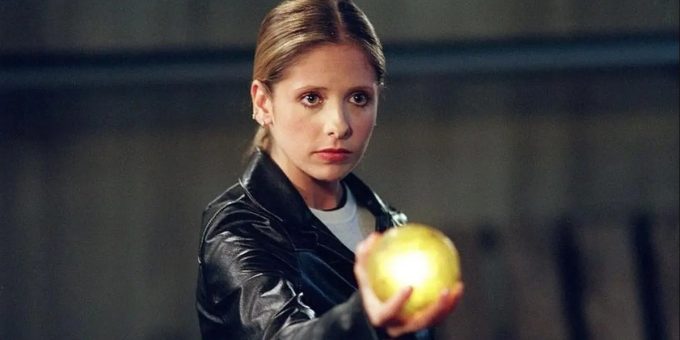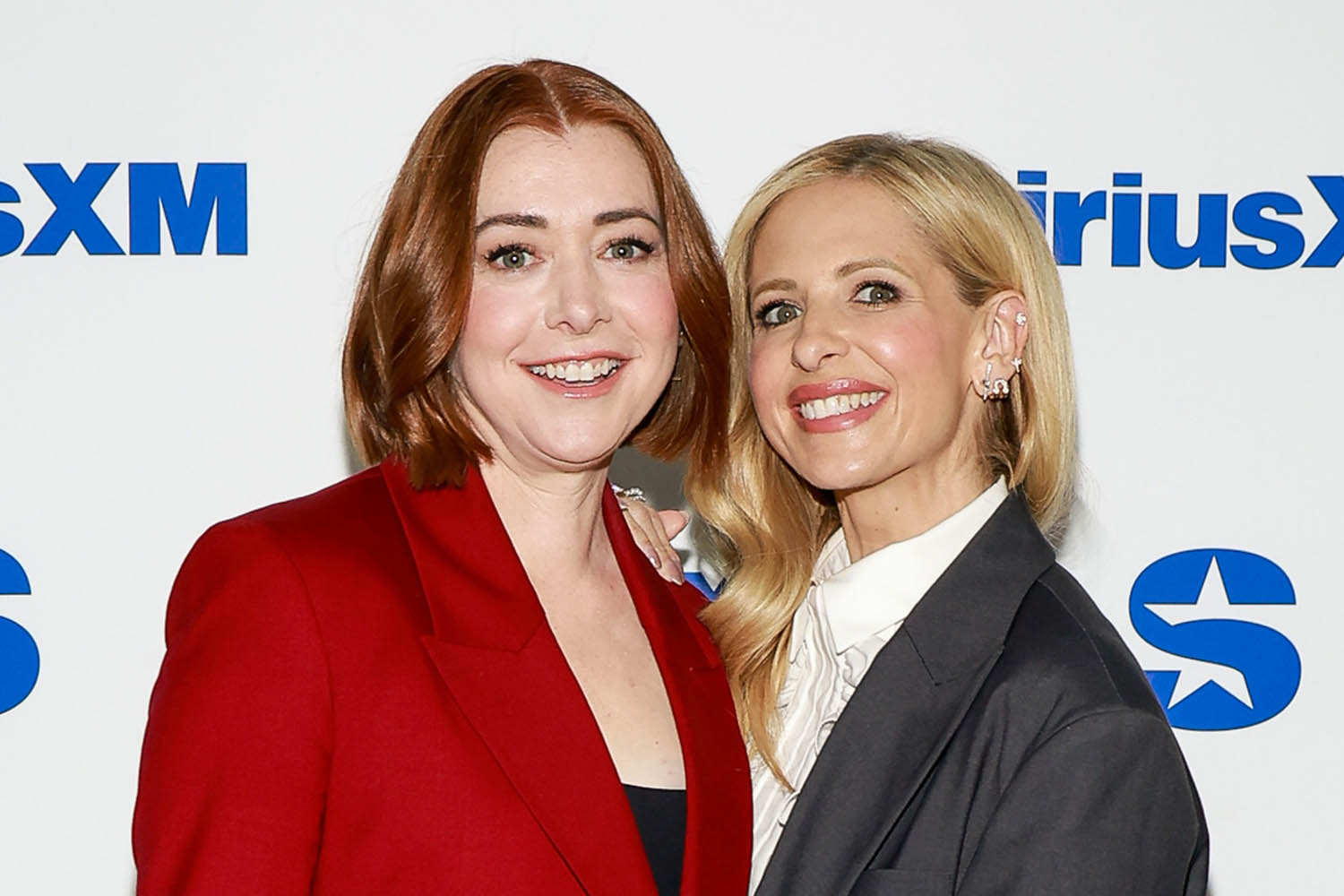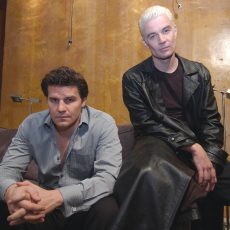
Why we need Buffy the Vampire Slayer more than ever
The former editor-in-chief of New Scientist can’t wait for the return of the ‘greatest female superhero’

Buffy the Vampire Slayer, a TV show that ended 22 years ago but has never died in the hearts of its millions of fans, is being rebooted. It will return, at a date as yet unannounced, with new cast members but also, thrillingly, some of the originals. Most importantly, Buffy herself – the actor Sarah Michelle Gellar – will star in the new series and take on an executive producer role.
With Gellar involved, the new show is canonical, even though the creator and showrunner of the original, Joss Whedon, is nowhere in sight. Once the toast of Hollywood, Whedon has fallen from grace after bullying accusations and Gellar has instead teamed up with Oscar-winning film director Chloé Zhao. Gellar had previously been against the idea of Buffy being brought back to life but changed her way of thinking thanks to reboots of other great shows, including Fraiser and Dexter.
We don’t know a lot so far, but the reboot will definitely contain both the original Buffy character and a new, younger vampire slayer. It’s possible the older one will be the mentor to the younger. Earlier this months, Gellar released footage of the moment when she made a video call to Ryan Kiera Armstrong to tell the young actor she had the part. In the clip, Gellar says to Armstrong, a 15-year-old in large spectacles: “How do you feel about helping me save the world?” For Buffy fans, it was spine-tingling stuff.

To describe Buffy‘s return as hotly anticipated is like describing the sun as quite warm. From the first moment that Gellar took to Instagram to confirm the news, every bit of information – and misinformation – has been exhaustively pored over by legions of fans. Many asked if Willow, the resident witch played by Alyson Hannigan, will be back? The fact Gellar has made a point of hanging out with Hannigan on Instagram recently suggested to some: maybe! Over the past 22 years, Hannigan has wisely remained both a TV star and free from controversy, making her very much reboot-suitable. The same cannot be said for another of the show’s original cast members, Nicholas Brendon, who played Xander. Sufficer to say, he probably won’t be returning. And what of Buffy’s two great vampire loves, Spike and Angel? Fans are divided over which of these love interests was worthy of Buffy and whether the men who played them have aged too much to portray perennially young vampires. James Marsters, who played Spike, has made it clear he would like to be in the mix, while David Boreanaz (Angel), who went on to star in big series after Buffy and its spin-off Angel, has appeared to rule himself out.

Then, of course, there’s Giles, played by Britain’s own Anthony Head. In the original, Giles was Buffy’s “watcher”. Surely he at least deserves a walk-on? Sadly, Buffy’s sister, Dawn Summers, played by Michelle Trachtenberg, will not be returning. She died earlier this year of complications related to diabetes, at the age of 39.
But does the world need more Buffy? After all, the 1990s and early 2000s gave us seven seasons of her exploits, all of which are readily available to stream. Successive generations have happily adopted it as their own. Personally, I have no doubt that yes, we do need more Buffy. Indeed, with women and minority groups maligned by Donald Trump and the Silicon Valley tech bros, now is the perfect time for the return of arguably the greatest female superhero ever. Buffy may look like the female victim in a horror film. But she is not the victim. She walks down dark streets, unafraid, and kills monsters. Now is a very good time for more Buffy.
I asked one of my 20-year-old nieces why she liked Buffy and she said: “Seeing a female lead in a show routinely fighting men with no souls in dark alleys, and never feeling frightened for her, is special!”
I should probably mention that while I write these words in a spirit of complete neutrality, Buffy the Vampire Slayer is my favourite ever TV series. I used to pretend it wasn’t. From the title, the show sounds as if it must be lightweight and only for teens. To some extent, it is froth. After all, the conceit is that Buffy and her school friends, the self-styled Scooby Gang, fight vampires and other supernatural baddies in a fictional, monster-ridden town called Sunnydale. This is because Buffy is the “chosen one” – only one of whole is born in every generation – and therefore has enhances strength and senses, and the odd vision. She also has a habit of falling in love with vampires. Yep, nonsense on paper.
And for anyone who has not watched the show, the first season is admittedly a bit silly. The monster effects are ludicrous. It’s very high school. It’s impossible to understand what the series is going to grow into. You probably have to get halfway into season two to really understand it. Some might bristle at the idea that they must watch a show for so long without enjoying it. Tough. Well, do you care about the zeitgeist or not?

In my most recent rewatch, I also found myself appreciating Gellar more than I ever had. When a show has a lot of flashy characters eating up the scenery – and sometimes each other – it can be easy to miss the quiet central performance that holds it all together. Gellar was young and was working in what we now know was a toxic on-set environment, but she held it together for so many seasons as she herself grew from a girl into a woman. The show is so tightly focused on her, on her expression, on her feelings. In its entirety, it builds to an extraordinary portrait of a young woman navigating the modern world.
With time, Buffy‘s pioneering brilliance has become more widely noted. Emily Nussbaum, a staff writer at The New Yorker who won the Pulitzer prize for her writing about television, credits it as the series that made her a TV critic. In 2014 she wrote that, in Buffy, Whedon was doing something “radical and groundbreaking” by “forging a mythic, feminist-inflected meld of horror, comedy, and teen drama.” Then in The Atlantic in 2017, David Sims wrote that Buffy forever changed television. “It might seem obvious now that a popular TV show would centre its viewing experience on both great individual episodes and long, serial arcs that played out over an entire season, but when Buffy did it in the late 1990s, it was a revolution that became the model for what we now think of as the ‘Golden Age’ of TV.”
So why bother remaking it? Well, the original is inevitably a product of its time. The central cast is all white. The show does explore big themes, but they are relics of a different era. It broke ground with storylines such as the gay love affair between Willow and Tara. But maybe more ground needs to be broken. And think of all the new issues the series can explore. This time, maybe one of the Scoobies will be trans or non-binary.
More generally, though, I’m interested in what both Buffy and the new generation of Scoobies will make of the world today. What battles will they choose to fight? There is, in my view, an awful lot to go at here.
The reboot could be terrible but, for now, I am living in hope.
Photographs by Jason Mendez/Getty Images, Axelle/Bauer-Griffen/FilmMagic
Original article at The Observer
This article has been reproduced for archive purposes, all rights remain.




